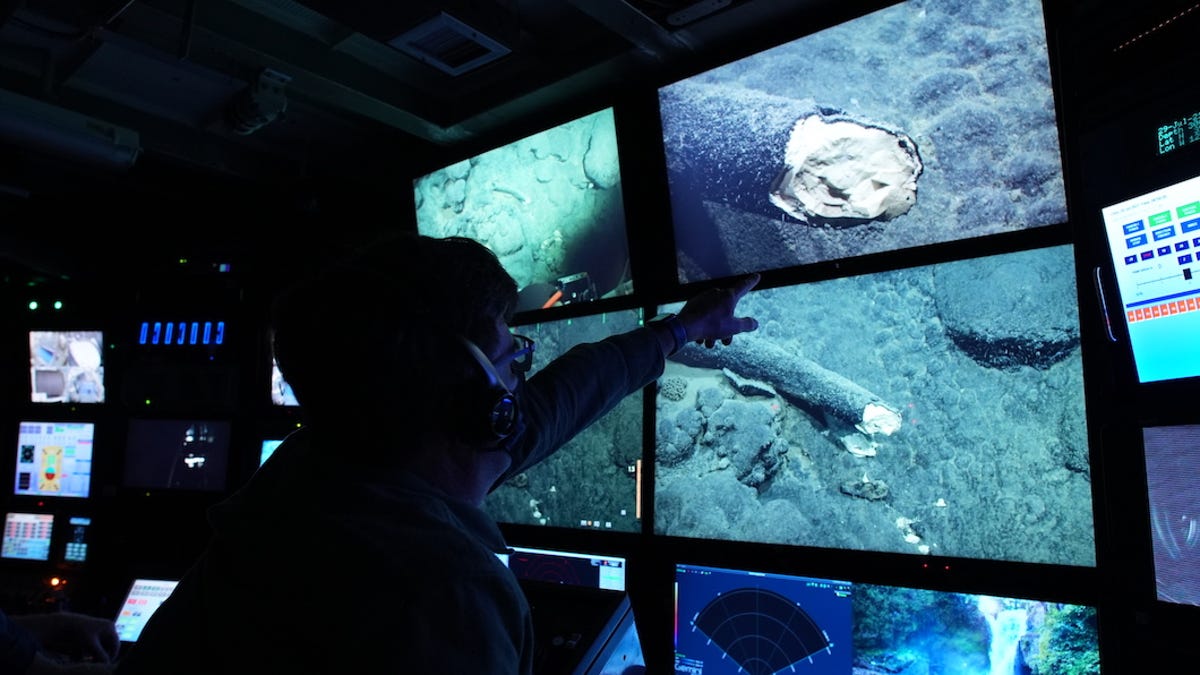'Expect the unexpected': Rare mammoth tusk recovered from ocean bottom
The well-preserved tusk is over 100,000 years old.
There are certain things you expect to find during a deep ocean exploration. Lots of sand. A variety of fish. The occasional mammoth tusk. Well, maybe not that last one.
Earlier this year, a Monterey Bay Aquarium Research Institute expedition retrieved a 3-foot (1-meter) section of mammoth tusk from a deep-sea location 185 miles (300 kilometers) off the coast of California. The tusk fragment is starting to reveal its fascinating secrets.
The research institute first spotted the tusk at 10,000 feet (3,070 meters) under the waves during a 2019 expedition. "You start to 'expect the unexpected' when exploring the deep sea, but I'm still stunned that we came upon the ancient tusk of a mammoth," said marine biologist Steven Haddock in an MBARI statement last week.
MBARI's Steven Haddock (left), UC Santa Cruz postdoctoral researcher Katie Moon (center) and University of Michigan paleontologist Daniel Fisher (right) prepare to clean the tusk piece in the ship's laboratory.
Researchers from MBARI and several universities are now investigating the tusk, which was beautifully preserved by the ocean environment. It came from a Columbian mammoth and is estimated to be over 100,000 years old. The team is studying its internal structure and expects to be able to determine the animal's age.
"This specimen's deep-sea preservational environment is different from almost anything we have seen elsewhere," said University of Michigan paleontologist and mammoth specialist Daniel Fisher. "Other mammoths have been retrieved from the ocean, but generally not from depths of more than a few tens of meters."
The team is trying to work out how the tusk ended up so far offshore by tracing ocean currents that could help point to its origins. The investigation will also involve a comparison of DNA with that of other mammoth specimens.
The mysterious artifact could help fill in the history of mammoths in North America. Said molecular biologist Beth Shapiro, "Specimens like this present a rare opportunity to paint a picture both of an animal that used to be alive and of the environment in which it lived."


